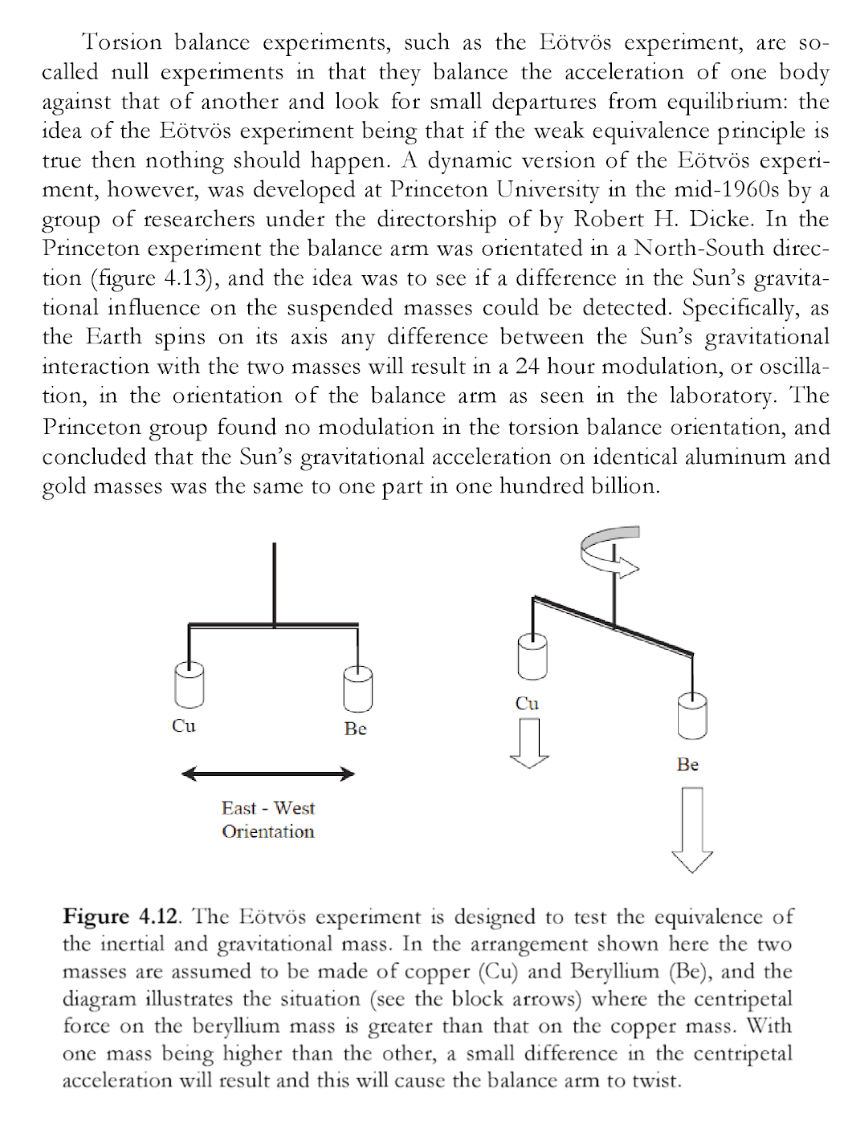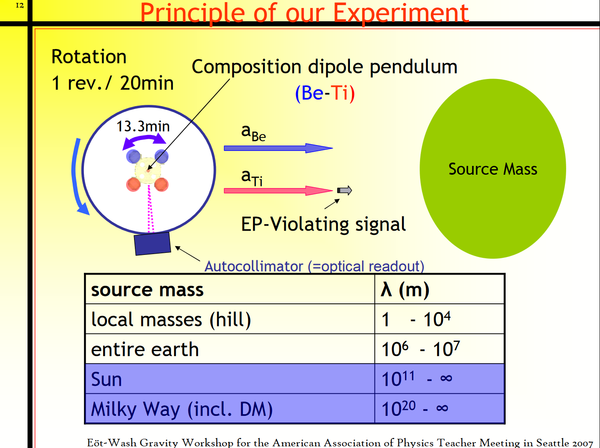Torsion Balance Experiments
The Equivalence Principle tests are incredibly reliable precision machines which are used to measure the Equivalence Principal to increasing sensitivity. Experimenters have redesigned the Equivalence Principle's Torsion Balance tests to try and detect the gravity variations caused by the sun, moon, and the tidal forces. It was found that the gravitational influence of the sun, moon, or the tidal forces could not be measured as manifest of the attraction of the bodies in the experiments. Variations to "gravity" did not appear.
The Princeton Experiment
From 'The Pendulum Paradigm: Variations on a Theme and the Measure of Heaven and Earth', by Professor Martin Beech, we read the following on p.176:
Essentially, the experiment is summarized as follows:
“ In the Princeton experiment the balance arm was oriented in a North-South direction (figure 4.13), and the idea was to see if a difference in the Sun's gravitational influence on the suspended masses could be detected. Specifically, as the Earth spins on its axis and difference between the Sun's gravitational interaction with the two masses will result in a 24 hour modulation or oscillation, in the orientation of the balance arm as seen in the laboratory. The Princeton group found no modulation of the torsion balance, and concluded that the Sun's gravitational acceleration on identical aluminum and gold masses was the same to one part in one hundred billion. ”
The masses were not attracted to the sun in the experiment, to an accuracy of one part in one hundred billion.
Repetitions
Additional experiments of this class are described. The first experiment in this list is the Princeton experiment above:
| Authors | Year | Description | Accuracy |
|---|---|---|---|
| Roll, Krotkov and Dicke | 1964 | Torsion balance experiment, dropping aluminum and gold test masses | difference is less than one part in one hundred billion |
| Branginsky and Panov | 1971 | Torsion balance, aluminum and platinum test masses, measuring acceleration towards the sun | difference is less than 1 part in a trillion (most accurate to date) |
| Eöt-Wash | 1987– | Torsion balance, measuring acceleration of different masses towards the earth, sun and galactic center, using several different kinds of masses | difference is less than a few parts in a trillion |
The Eöt-Wash experiments were repeated by others:
https://plato.stanford.edu/entries/physics-experiment/app4.html
“ The torsion-balance experiments of Eöt-Wash were repeated by others including (Cowsik et al. 1988; Fitch, Isaila and Palmer 1988; Adelberger 1989; Bennett 1989; Newman, Graham and Nelson 1989; Stubbs et al. 1989; Cowsik et al. 1990; Nelson, Graham and Newman 1990). These repetitions, in different locations and using different substances, gave consistently negative results. ”
Equivalence Principle Violation
An Eöt-Wash presentation explains that the influence of an external source mass would be a violation of the Equivalence Principle (EP).
The Equivalence Principle has never been violated. See Evidence for the Universal Accelerator.


